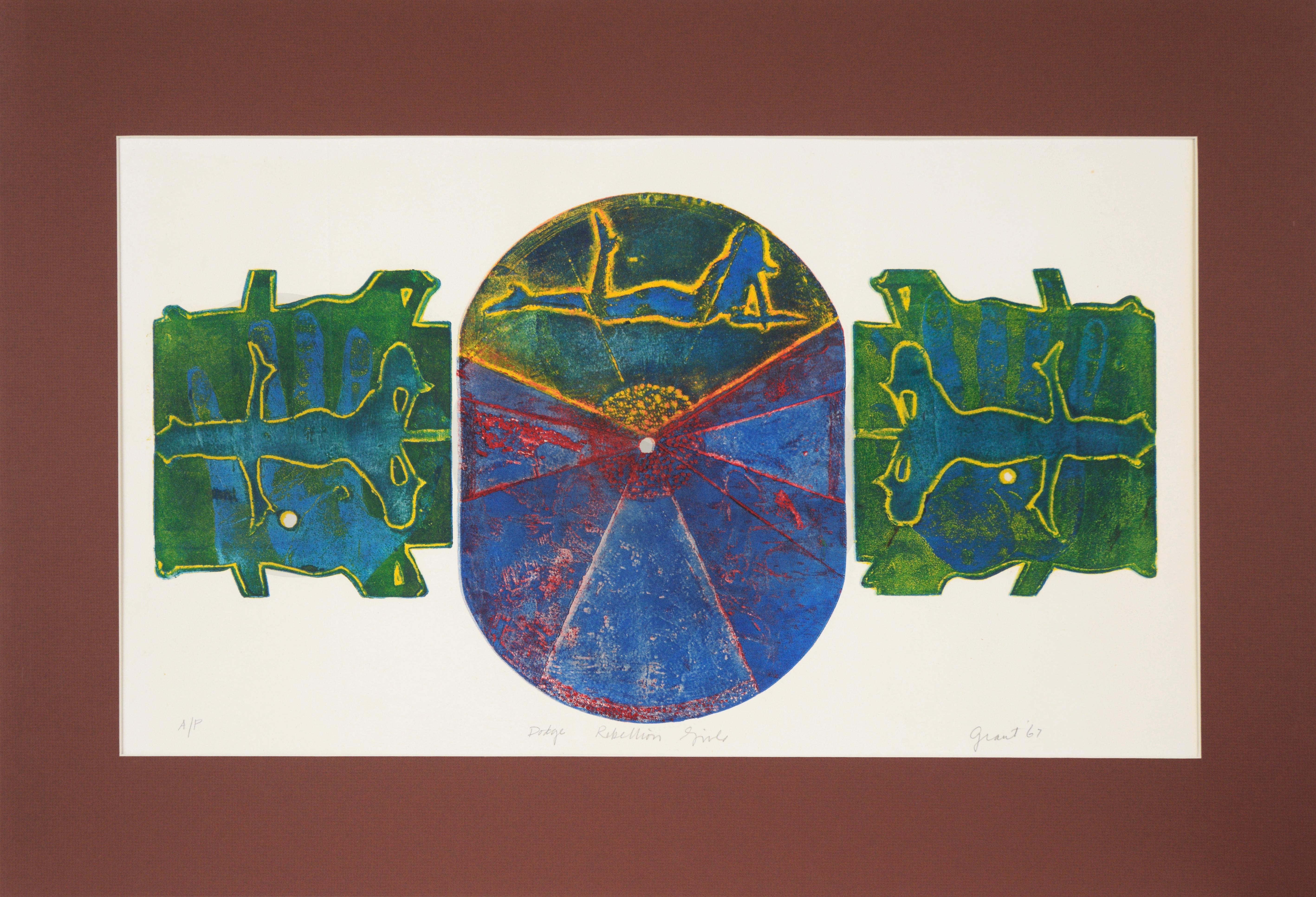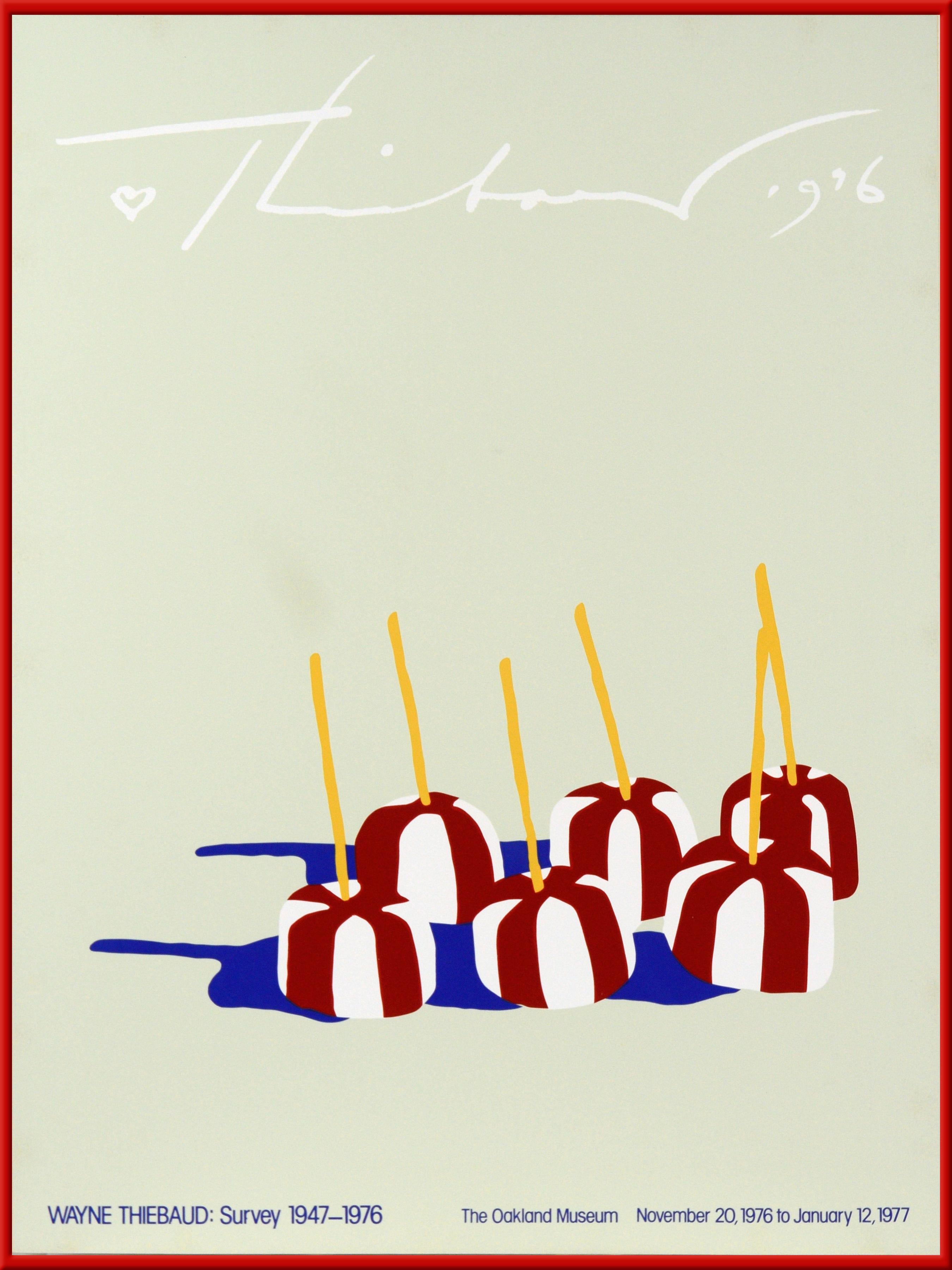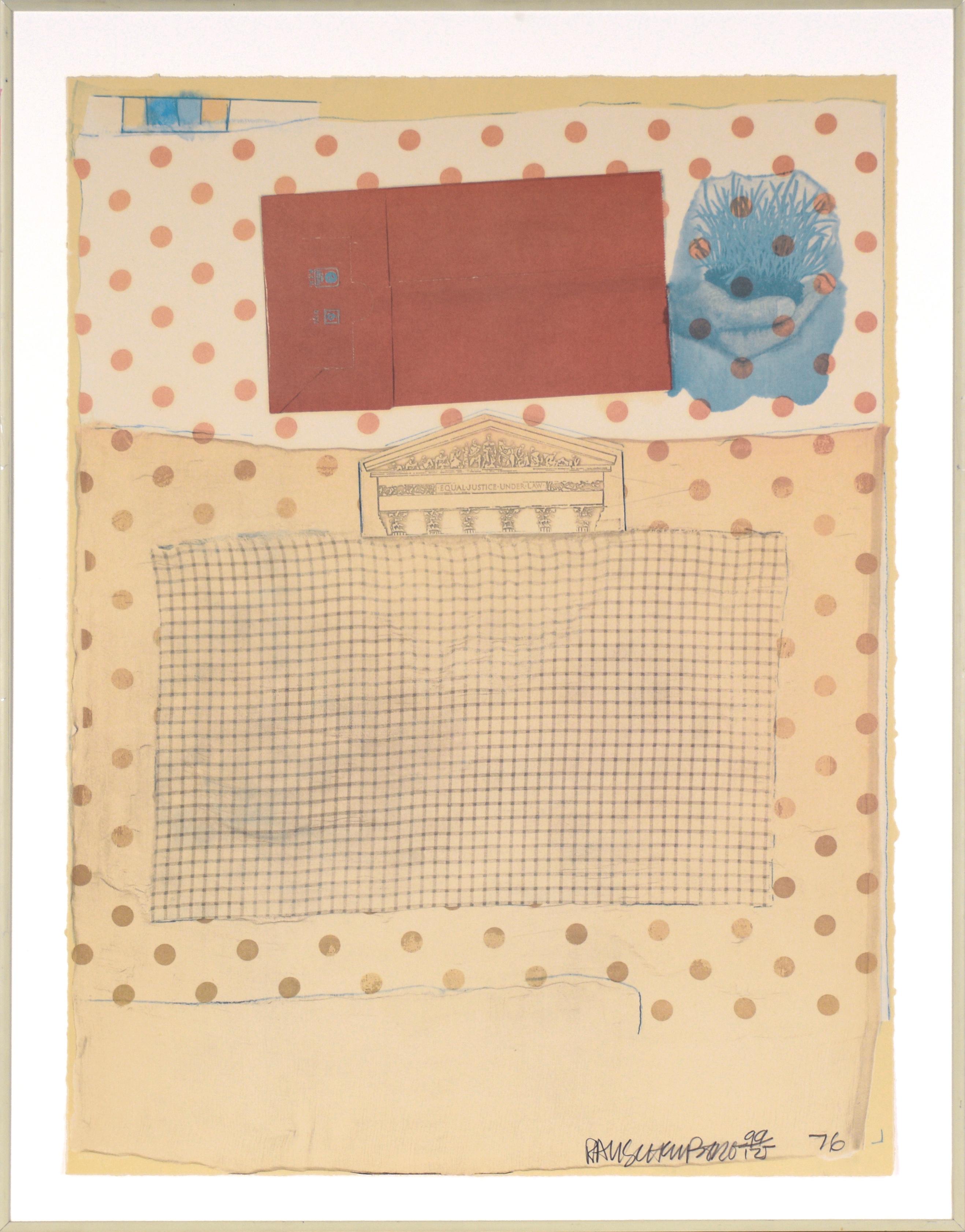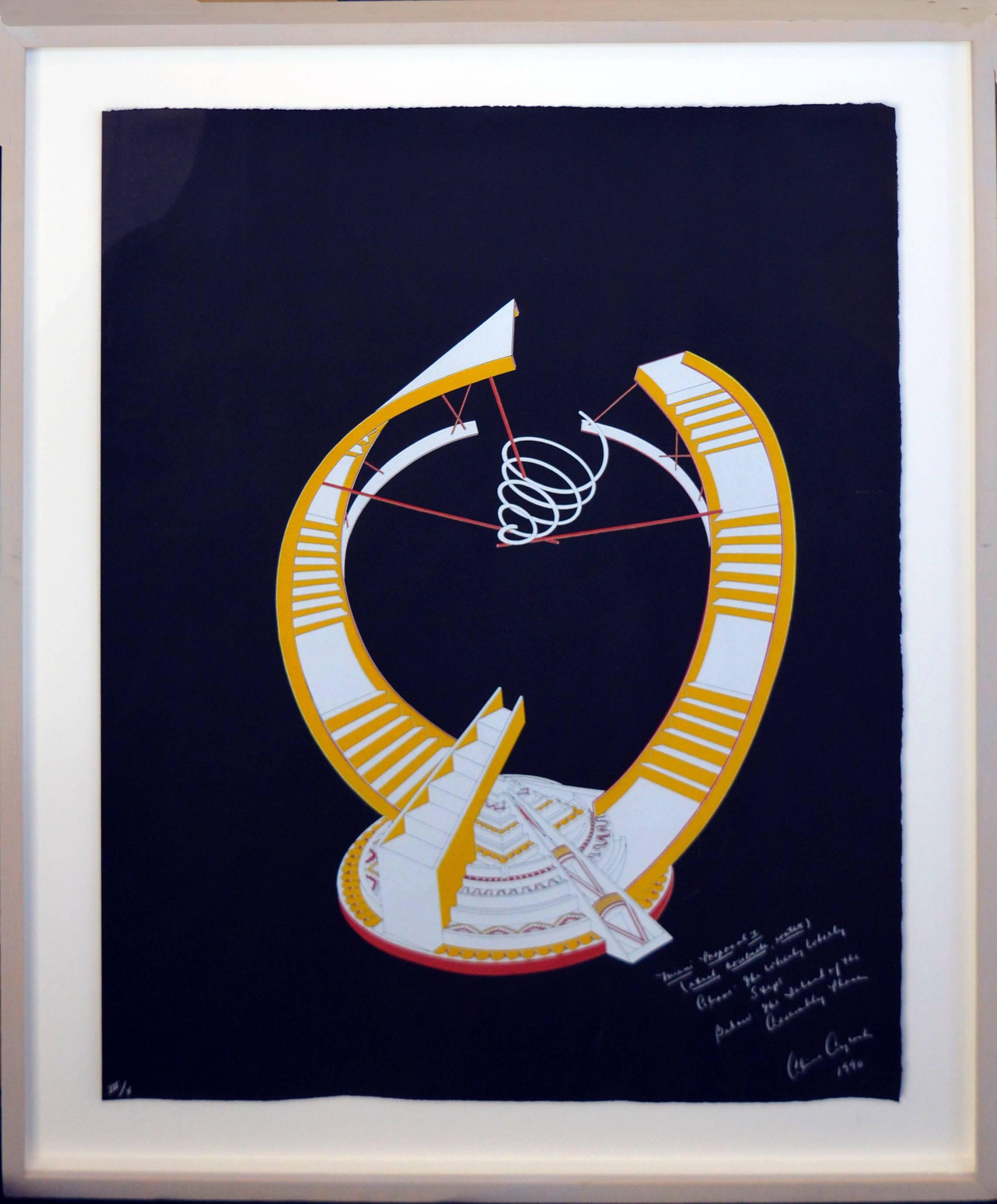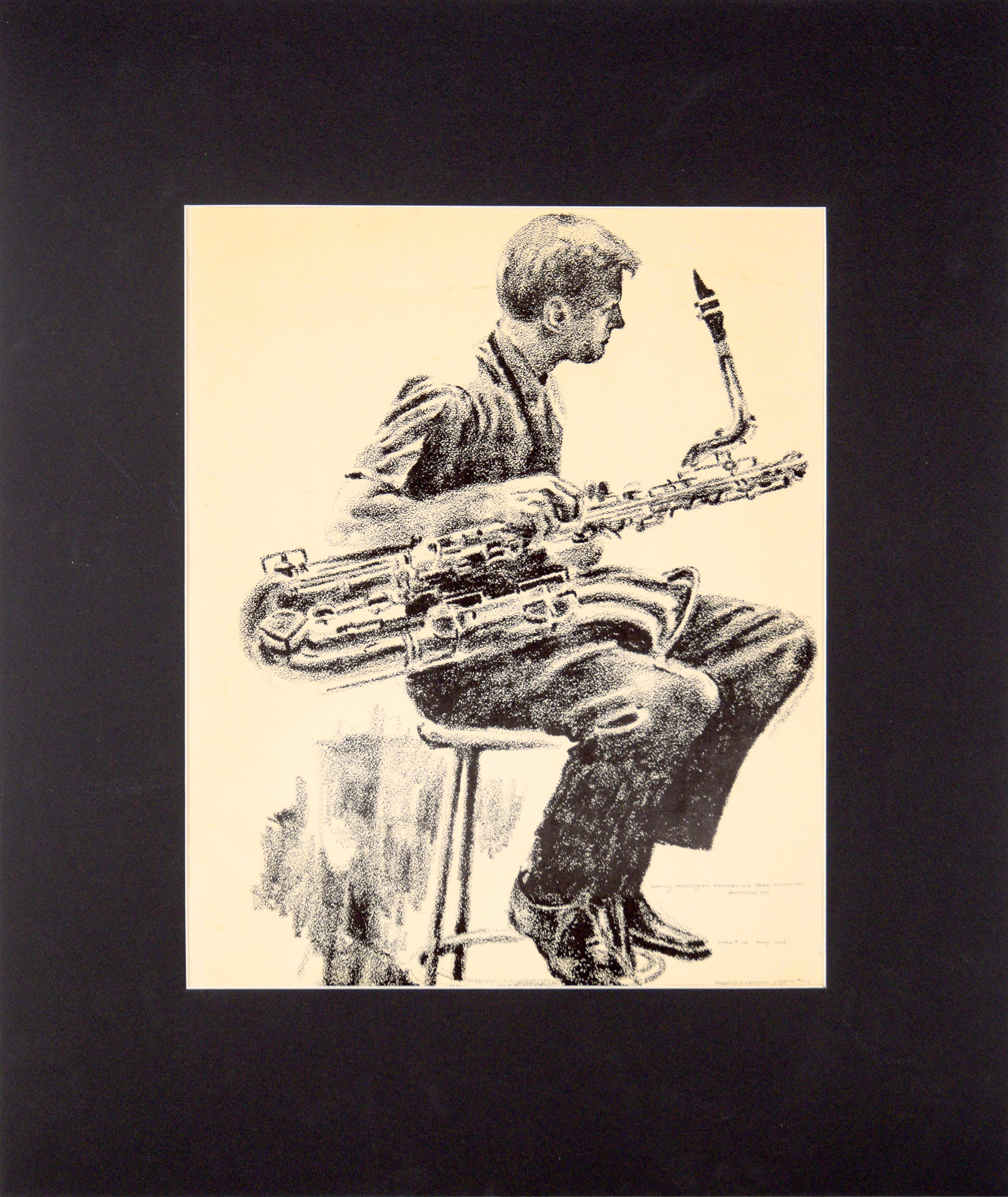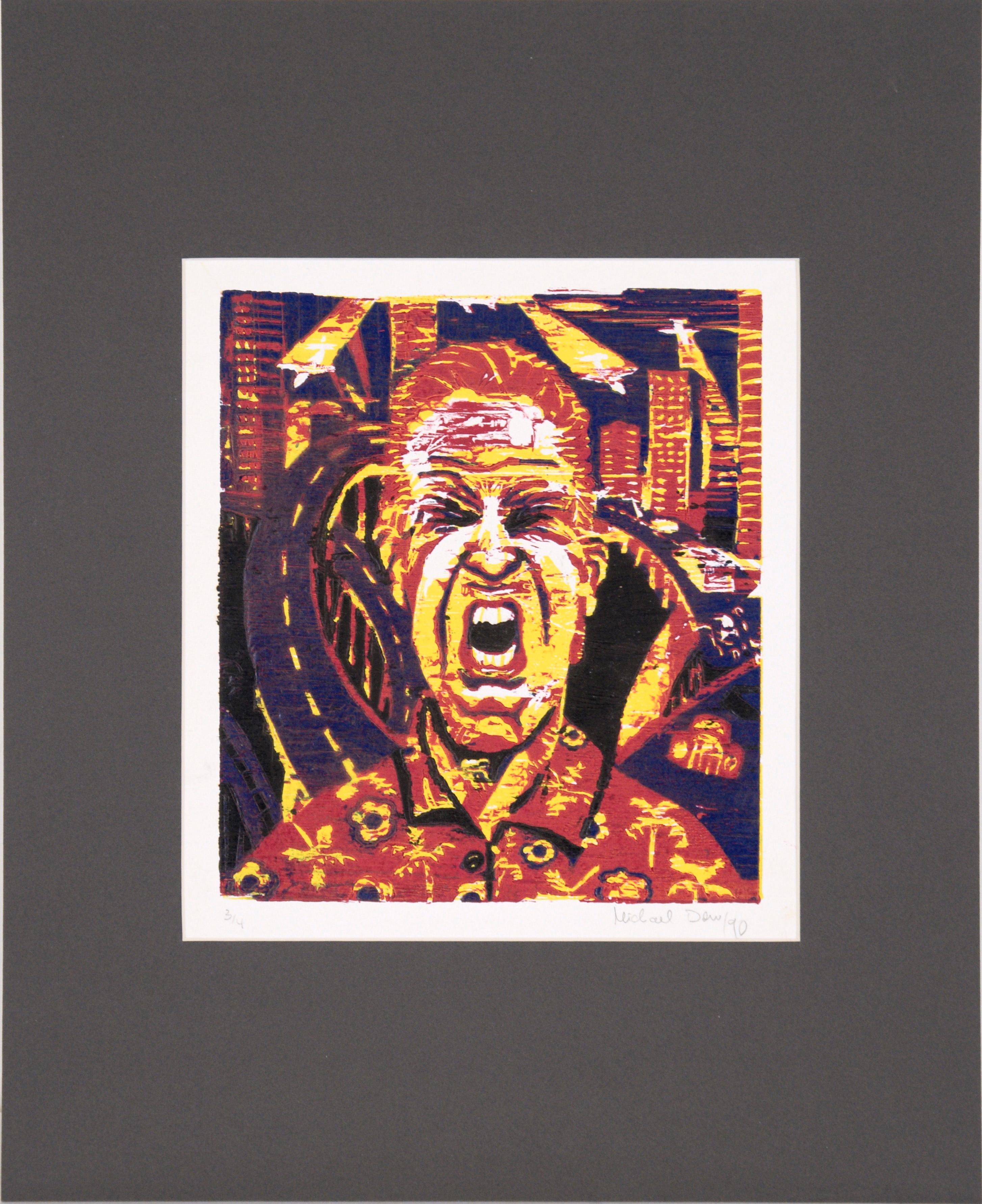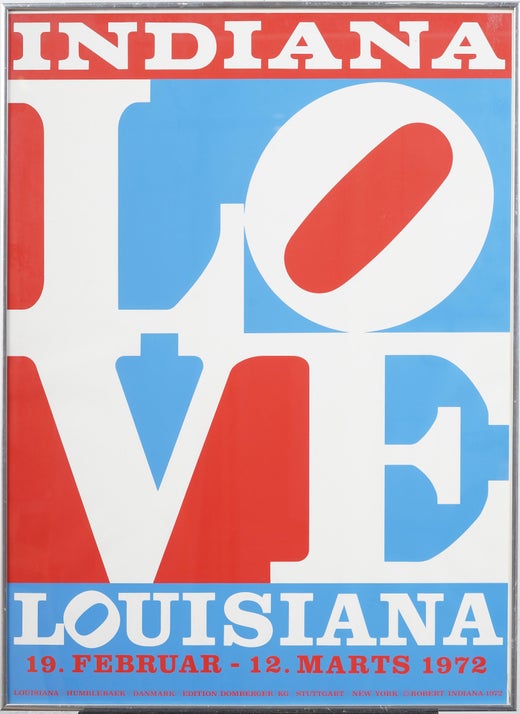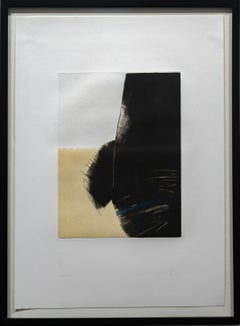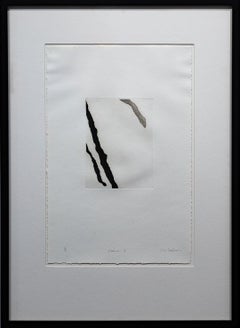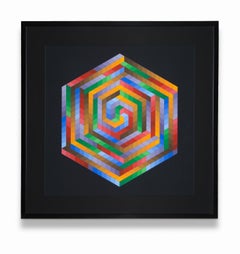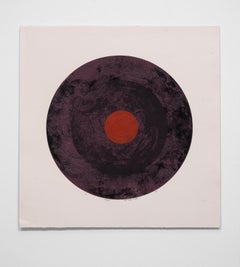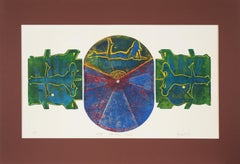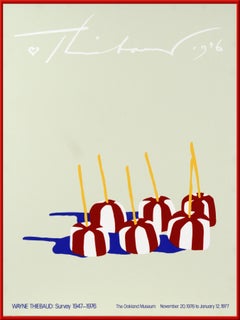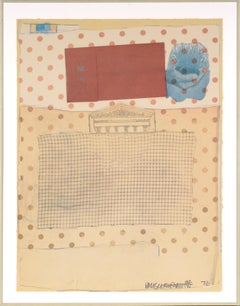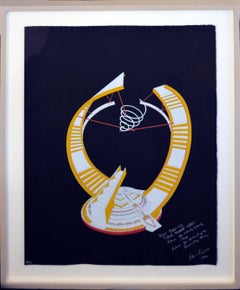"Indianapolis Museum of Art Inaugural Exhibitions", 25 October 1970, is an eye popping large bold colorful geometric abstract silk screen. It is signed on the lower right.
Robert Indiana, one of the preeminent figures in American art since the 1960s, played a central role in the development of assemblage art, hard-edge painting, Pop art, Neo-Dada, American Modernism and Modern Art. A self-proclaimed “American painter of signs,” Indiana created a highly original body of work that explores American identity, personal history, and the power of abstraction and language, establishing an important legacy that resonates in the work of many contemporary artists such as Andy Warhol, Keith Haring, Roy Lectenstein, David Hockney, Romero Britto, Richard Hamilton and Robert Rauschenberg who make the written word a central element of their oeuvre.
Robert Indiana was born Robert Clark in New Castle, Indiana on September 13, 1928. Adopted as an infant, he spent his childhood moving frequently throughout his namesake state. At 14 he moved to Indianapolis in order to attend Arsenal Technical High School, known for its strong arts curriculum. After graduating he spent three years in the U.S. Air Force and then studied at the Art Institute of Chicago, the Skowhegan School of Sculpture and Painting in Maine, and the Edinburgh College of Art in Scotland.
In 1956, two years after moving to New York, Indiana met Ellsworth Kelly, and upon his recommendation took up residence in Coenties Slip, where a community of artists that would come to include Kelly, Agnes Martin, James Rosenquist, and Jack Youngerman had studios. Indiana, like some of his fellow artists, scavenged the area’s abandoned warehouses for materials, creating sculptural assemblages from old wooden beams, rusted metal wheels, and other remnants of the shipping trade that had thrived in Coenties Slip. The discovery of 19th century brass stencils led to the incorporation of brightly colored numbers and short emotionally charged words onto these sculptures as well as canvases, and became the basis of his new painterly vocabulary.
Although acknowledged as a leader of Pop, Indiana distinguished himself from his Pop peers by addressing important social and political issues and incorporating profound historical and literary references into his works. In 1964 Indiana accepted Philip Johnson’s invitation to design a new work for the New York State Pavilion at the New York World’s Fair, creating a 20-foot EAT sign composed of flashing lights, and collaborated with Andy Warhol on the film Eat, a silent portrait of Indiana eating a mushroom in his Coenties Slip studio.
1966 marked a turning point in Indiana’s career with the success of his LOVE image, which had been featured in a solo exhibition at the Stable Gallery. The word love, a theme central to Indiana’s work, first appeared in the painting 4-Star Love (1961). Love is a subject of great spiritual significance for the artist. Initially experimenting with a composition of stacked letters in a series of 1964 rubbings, Indiana subsequently turned this inventive design, a formal departure from his previous works, into different hard-edged color variations on canvas. Indiana’s LOVE, selected by the Museum of Modern Art in 1965 for its Christmas card, quickly permeated wider popular culture, and was adopted as an emblem of the “Love Generation.” Appearing on a best-selling United States Postal Service stamp (1973) and reproduced on countless unauthorized products, the proliferation of the image led, on one hand, to negative criticism and incorrect assumptions of the artist as a sell-out. However, the image’s popularity more importantly emphasizes its great resonance with large and diverse audiences, and has become an icon of modern art.
In 1978, Indiana chose to remove himself from the New York art world. He settled on the remote island of Vinalhaven in Maine. There Indiana turned to themes that related to his local experience, working on a suite of eighteen large-scale paintings known as The Hartley Elegies (1989-94), inspired by the German Officer paintings of Marsden Hartley, who lived on Vinalhaven in the summer of 1938.
In addition to being a painter and sculptor, Indiana has created a significant number of prints, among them the Numbers Portfolio (1968), a collaboration with the poet Robert Creeley, as well as many other works of graphic art, including the poster for the opening of the New York State Theater, Lincoln Center (1964), the poster for the opening exhibition of the Indianapolis Museum of Art Inaugural Exhibition 1970, as well as the poster for the opening of the Hirshhorn Museum of Art (1974.)
Indiana’s artwork has been featured in numerous solo and group exhibitions around the world, and his works are in the permanent collections of the Museum of Modern Art and the Whitney Museum of American Art in New York, the National Gallery of Art, the Hirshhorn Museum and Sculpture Garden and the Smithsonian Museum of American Art in Washington, D.C., the Albright-Knox Art Gallery in Buffalo, New York, the San Francisco Museum of Modern Art, the Menil Collection in Houston, the Currier Museum of Art, Manchester, New Hampshire, the Museum Ludwig in Cologne, Germany, the Stedelijk Van Abbemuseum in Eindhoven, the Netherlands, the Museum Ludwig in Vienna, Austria, the Art Museum of Ontario in Toronto, and the Israel Museum in Jerusalem.
In 2013 the Whitney Museum of American Art hosted the artist’s first New York retrospective, Robert Indiana: Beyond LOVE, curated by Barbara Haskell. Indiana passed away in his home on May 19th, 2018, just a few weeks before the opening of his sculpture retrospective at the Albright-Knox Art Gallery.
